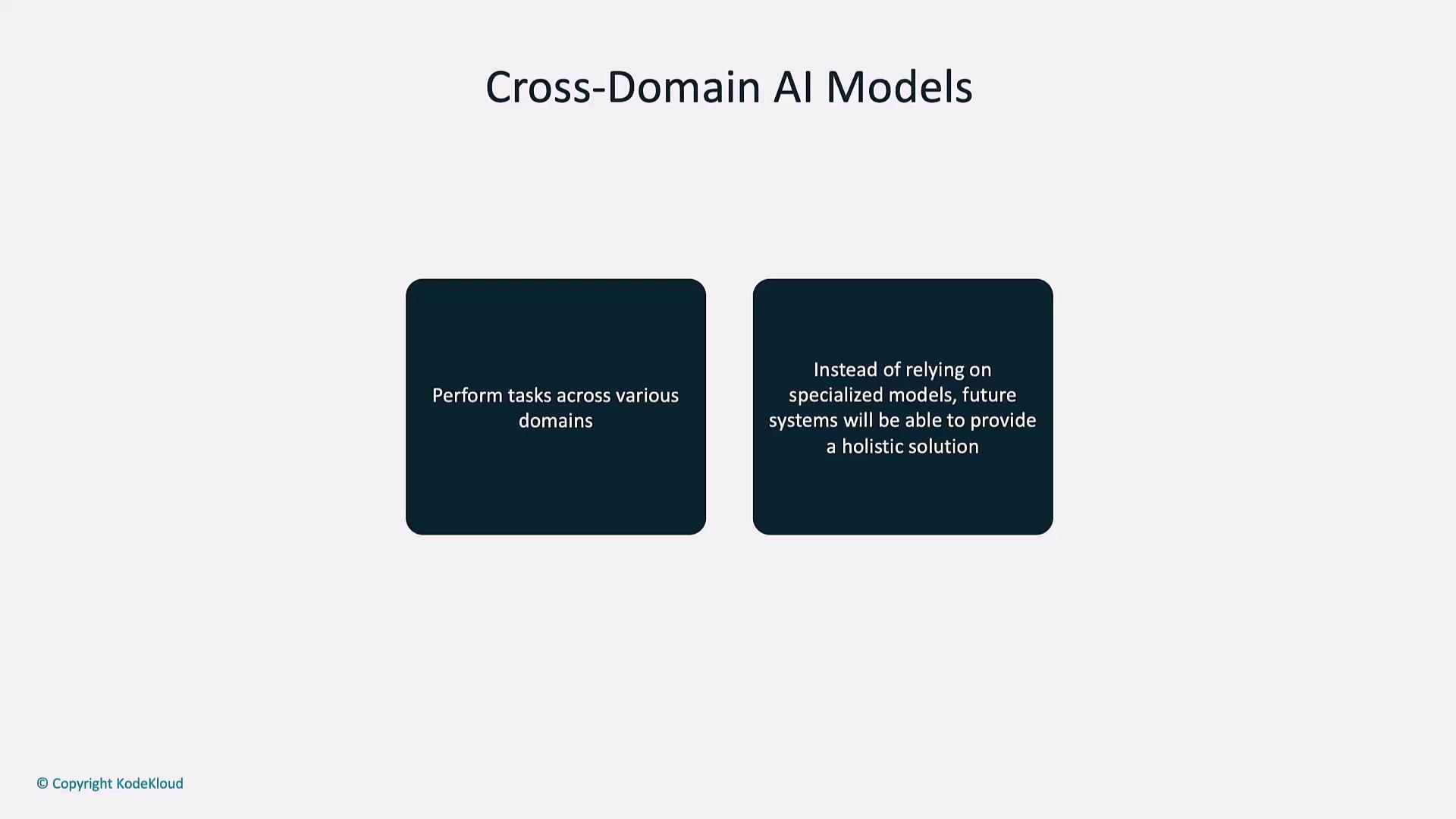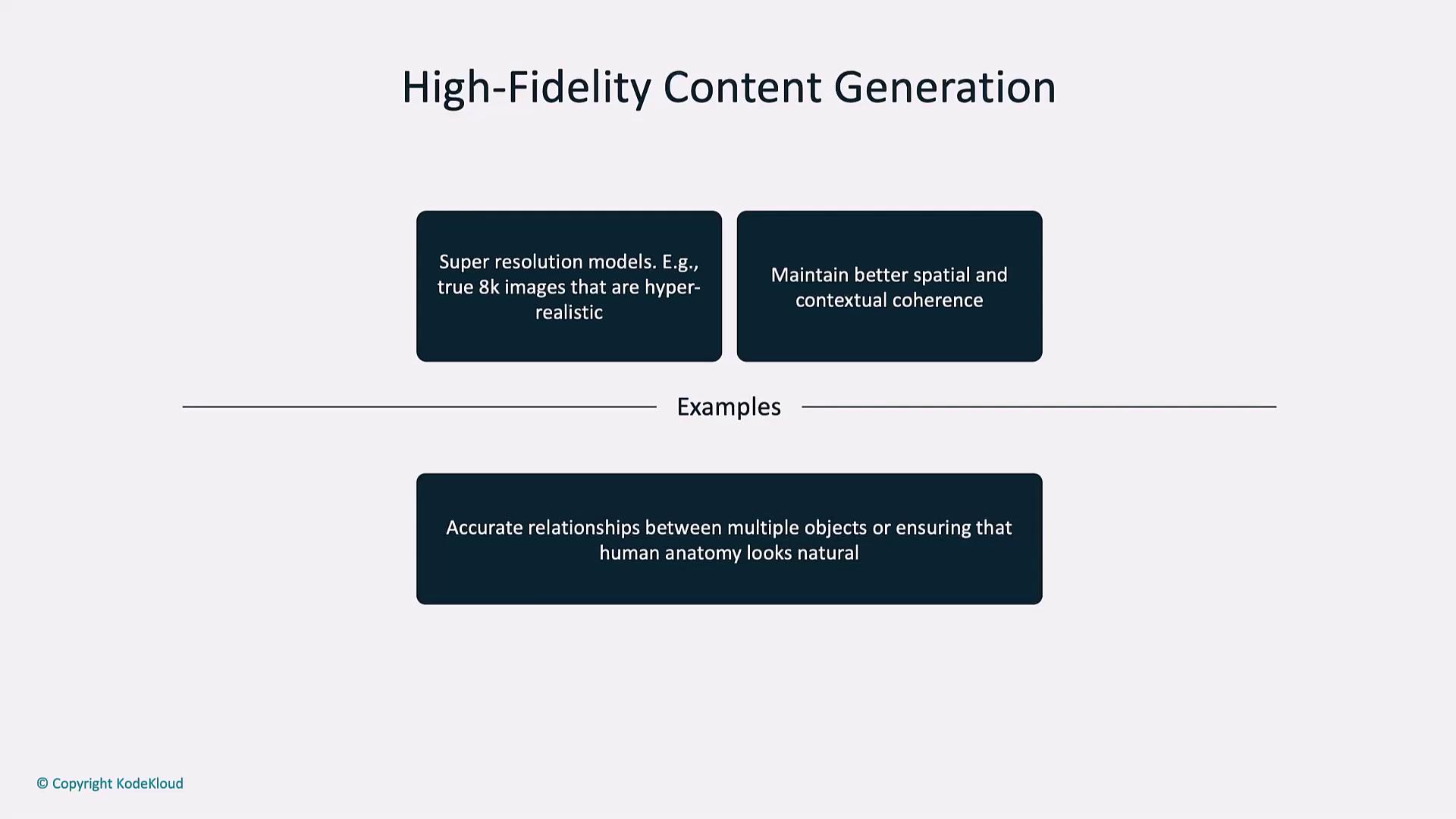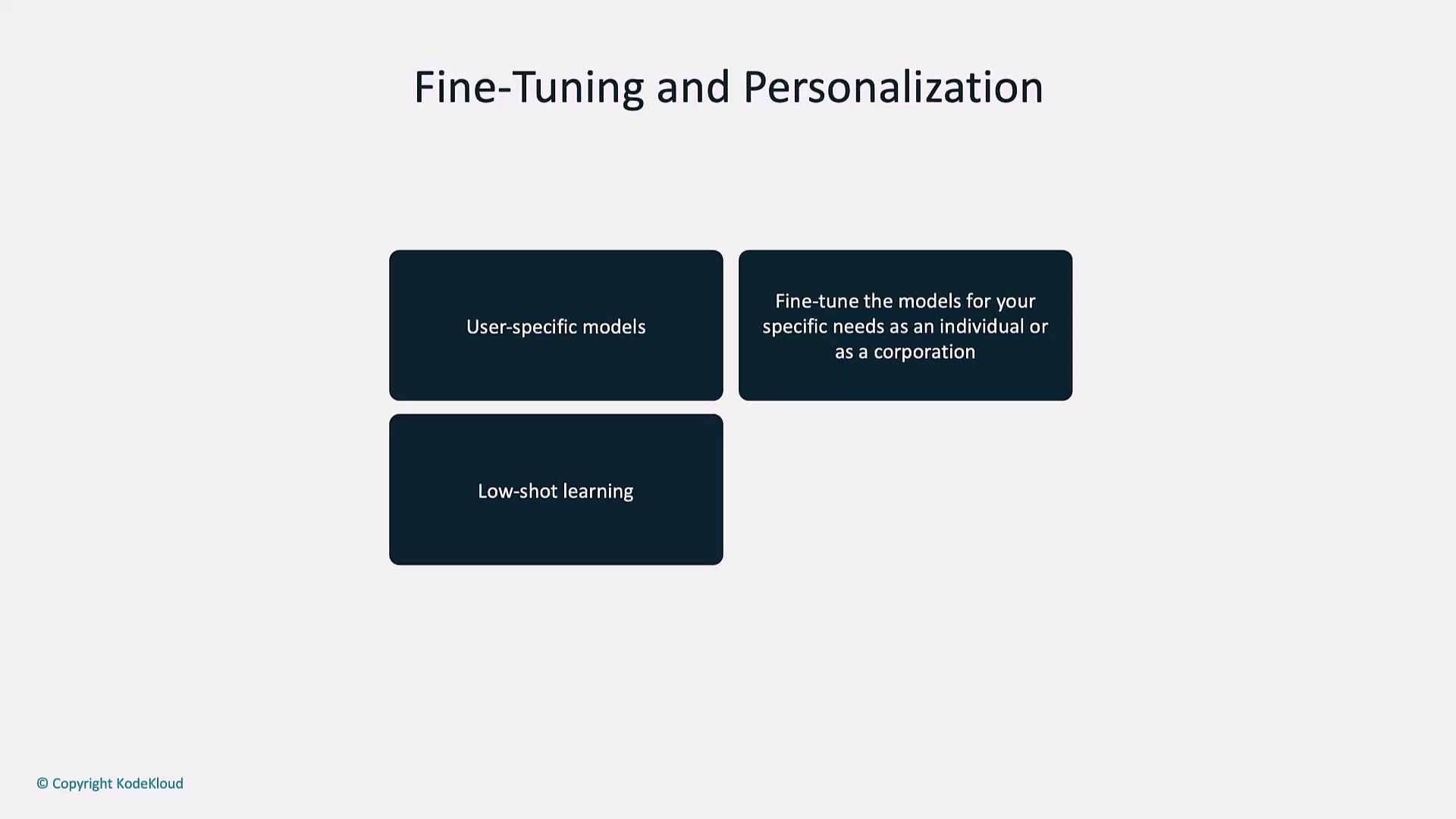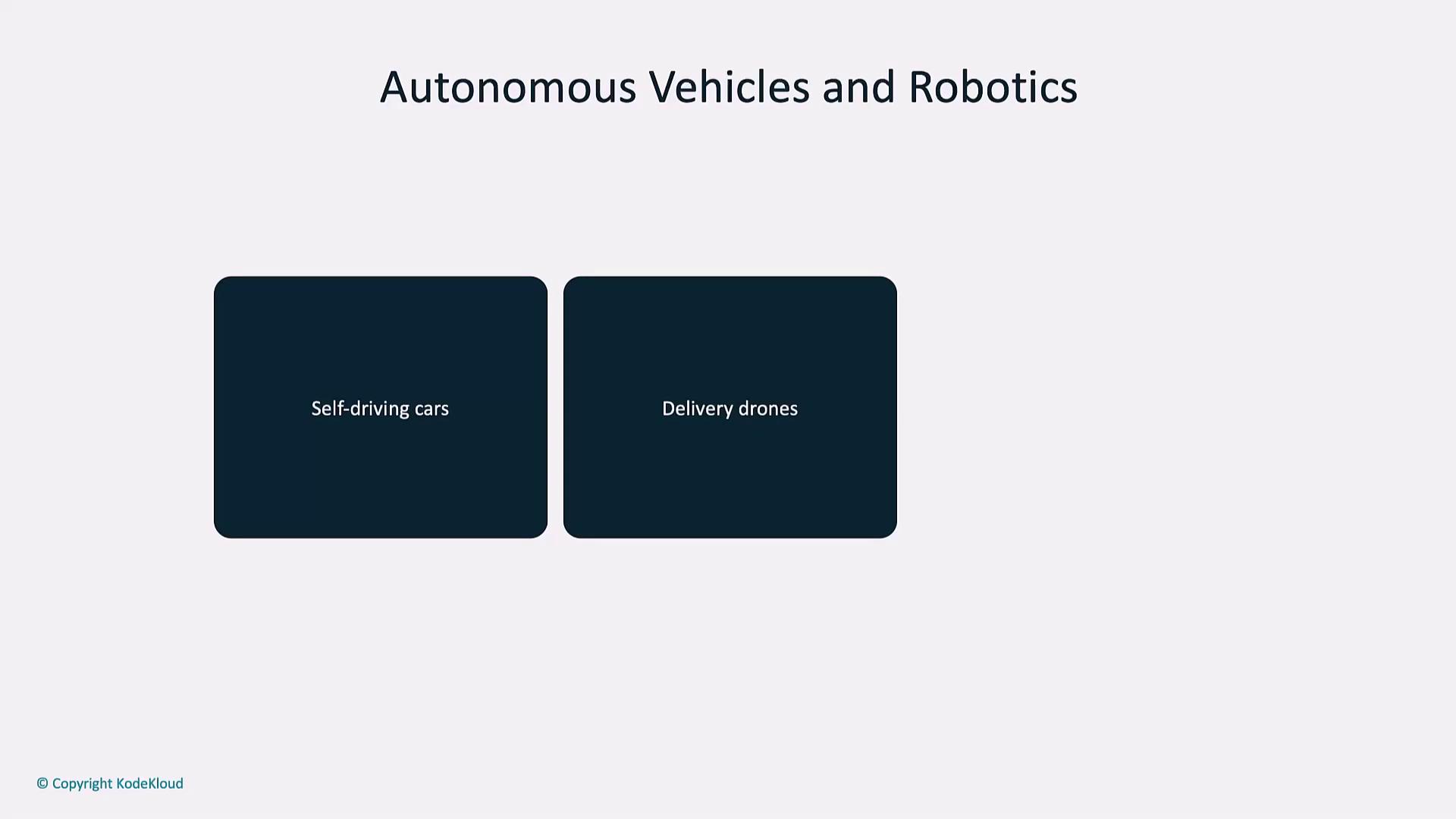Introduction to OpenAI
Vision
Future Trends and Innovations in OpenAI Vision
Discover the cutting-edge developments shaping the future of AI vision and generative models. From DALL·E and CLIP to the next wave of multimodal AI, these breakthroughs promise to transform creative industries, healthcare, robotics, and more. In this article, we dive into:
- Multimodal AI integration
- Cross-domain AI models
- Advances in generative AI
- Real-world applications
Multimodal AI Integration
The next frontier in AI is seamless multimodal understanding—processing and generating text, images, audio, video, and even 3D content within a single architecture. While CLIP already aligns text and image representations, upcoming systems will unify diverse data streams to:
- Interpret spoken instructions and visual context simultaneously
- Generate synchronized video and audio from a textual prompt
- Support interactive 3D design workflows
Note
Multimodal models are poised to revolutionize fields like virtual production, telemedicine, and immersive education by offering a unified interface for varied data types.
Cross-Domain AI Models
Generalist AI systems will replace siloed models for text, image, or video tasks. Instead of combining specialized pipelines, a single cross-domain model will:
- Accept heterogeneous inputs (e.g., text descriptions, sketches, audio clips)
- Produce end-to-end solutions (such as animations, technical diagrams, or synthesized voices)
- Adapt on-the-fly to new tasks without retraining

Advances in Generative AI Models
Super-Resolution and High-Fidelity Content Generation
Emerging super-resolution techniques will deliver authentic 8K images, preserving intricate details and accurate object relationships. Future models will overcome common artifacts—such as distorted hands or unrealistic textures—by learning spatial coherence at scale.

Fine-Tuning and Personalization
Custom AI experiences will become standard. Organizations and individuals can fine-tune foundational vision models on proprietary data, resulting in bespoke AI assistants. Enhanced few-shot learning and zero-shot learning capabilities will allow rapid adaptation to novel tasks with minimal labeled examples.

Warning
Fine-tuning on sensitive or proprietary datasets may introduce privacy and bias concerns. Always evaluate model outputs and maintain robust data governance.
Real-World Applications
AI vision is already powering transformative solutions across multiple sectors. Below is a snapshot of high-impact use cases:
| Use Case | Description | Impact |
|---|---|---|
| Automated Content Creation | Generate ads, storyboards, social media graphics, and video assets at scale | Accelerates creative workflows and lowers production costs |
| Interactive Entertainment | Real-time generation of game worlds, characters, and narratives based on user prompts | Delivers personalized, immersive player experiences |
| Healthcare Imaging | AI-assisted analysis of X-rays, MRIs, and CT scans for early detection of anomalies | Improves diagnostic speed and accuracy, reducing clinician workload |
| Autonomous Vehicles & Drones | Onboard vision systems for navigation, obstacle avoidance, and package delivery coordination | Enhances safety and efficiency in self-driving cars and logistics drones |
| Education & Training | Adaptive visual modules and interactive simulations for STEM, language learning, and more | Boosts engagement and tailors content to individual learning paths |
Automated Content Creation
AI-driven platforms now automate entire creative pipelines—from mood-board generation to final renders. Teams collaborate with generative models to brainstorm concepts, iterate designs, and produce polished assets faster than ever.
Interactive Entertainment
In gaming and film, dynamic AI-generated environments and characters respond to player or viewer inputs in real time. Users simply describe their desired scenario, and the AI constructs a tailored narrative with appropriate visuals and soundscapes.
Healthcare and Medical Imaging
Vision-powered AI tools analyze medical scans to highlight potential concerns such as tumors, fractures, and infections. By combining pattern recognition with clinical databases, these assistants improve detection rates and streamline radiology workflows.
Autonomous Vehicles and Robotics
Self-driving cars, delivery drones, and warehouse robots all rely on advanced vision models for object detection, semantic segmentation, and path planning in complex environments.

AI in Education
Vision-based AI systems create interactive lessons—annotated diagrams, virtual lab experiments, and real-time feedback on handwritten work. These adaptive tools help educators tailor instruction and support diverse learning styles.
Links and References
- OpenAI DALL·E
- OpenAI CLIP
- Few-shot Learning (Wikipedia)
- Zero-shot Learning (Wikipedia)
- Ethics and Governance in AI
- Kubernetes Documentation
Explore these resources to stay ahead in the rapidly evolving landscape of AI vision and generative modeling.
Watch Video
Watch video content